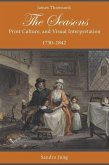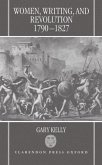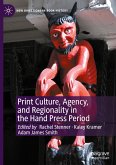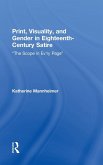Radical Satire and Print Culture 1790-1822 focuses on the work produced collaboratively between 1816 and 1822 by the poet and radical journalist William Hone and the brilliant young graphic satirist George Cruikshank. Dr Wood provides a much needed analytical framework for Regency radical satire uncovering a set of new sources and previously unknown cultural contexts for Hone and Cruikshank's work, which is shown to combine modernity and tradition in thrilling ways. Hone fused the literary and political inheritance of eighteenth-century satire with contemporary developments in advertising , popular publishing and mass marketing; Cruikshank combined the sophisticated conventions of the political print with the most up-to-date methods of advertizing, politics and propaganda. Entertaining and original, this is an important contribution to the study of radical satire, which sheds new light on the relations between popular political authors and graphic artists and the major Romantic writers of the period.
With the publication of Marcus Wood's Radical Satire and Print Culture 1790-1822 there is at last a study that does justice to the work produced collaboratively between 1816 and 1822 by the poet and radical journalist William Hone and the brilliant young graphic artist George Cruikshank. The book provides new ways into the study of radical and Romantic satire. It uncovers hitherto forgotten or unimagined contexts for the work of Hone, Cruikshank, and their contemporaries. Radical satire fused the literary and political inheritance of seventeenth and eighteenth-century satire with the most up-to-date developments in advertising, popular publishing, and the print trade. Wood scrutinizes the complex parodic experiments which resulted, and reveals the satires which proliferated around the Peterloo Massacre and the Queen Caroline affair to evade distinctions between literature and trash, art and advertising, politics and propaganda. The book is also a major contribution to the current debate on relations between satire and parody. Popular satire in the Romantic age emerges as essentially parodic, extending beyond literary travesty to work upon dress codes, social customs, architecture, and the languages of church and law. Radical Satire and Print Culture teaches us that in order to understand the operations of parody we must be as ready to spot a reference to Packwood's celebrated razor strops, or to a Lutheran pornographic woodcut, as to pounce upon an echo from The Rape of the Lock.
With the publication of Marcus Wood's Radical Satire and Print Culture 1790-1822 there is at last a study that does justice to the work produced collaboratively between 1816 and 1822 by the poet and radical journalist William Hone and the brilliant young graphic artist George Cruikshank. The book provides new ways into the study of radical and Romantic satire. It uncovers hitherto forgotten or unimagined contexts for the work of Hone, Cruikshank, and their contemporaries. Radical satire fused the literary and political inheritance of seventeenth and eighteenth-century satire with the most up-to-date developments in advertising, popular publishing, and the print trade. Wood scrutinizes the complex parodic experiments which resulted, and reveals the satires which proliferated around the Peterloo Massacre and the Queen Caroline affair to evade distinctions between literature and trash, art and advertising, politics and propaganda. The book is also a major contribution to the current debate on relations between satire and parody. Popular satire in the Romantic age emerges as essentially parodic, extending beyond literary travesty to work upon dress codes, social customs, architecture, and the languages of church and law. Radical Satire and Print Culture teaches us that in order to understand the operations of parody we must be as ready to spot a reference to Packwood's celebrated razor strops, or to a Lutheran pornographic woodcut, as to pounce upon an echo from The Rape of the Lock.








